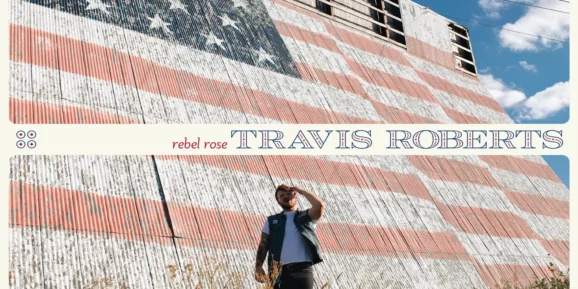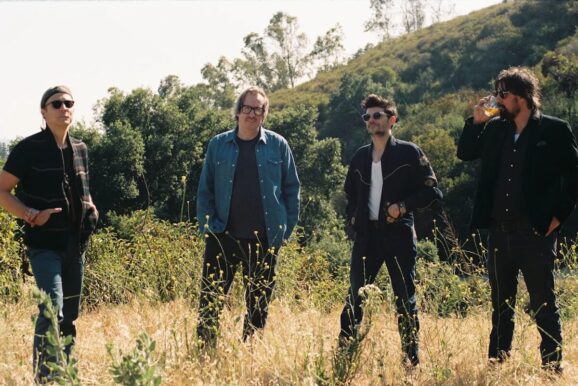The smiling visage of the late Richard Manuel that adorns the dust cover of Stephen T. Lewis’ biography belies the sorrowful tragedy of the musician’s life. And intentionally or not, the author’s narrative follows the ups and downs of the man’s troubled existence.
As a result, the clear-eyed insights Lewis offers are worth the effort it takes to glean them from His Life And Music From The Hawks And Bob Dylan to The Band. The Band’s late keyboardist, vocalist, and composer’s rapport with Bob Dylan and his late-in-life creative resurgence is now, thankfully, common knowledge.
In writing the book, Lewis is performing a labor of love. And his passion fuels his perceptions in the early passages as he recounts Manuel’s discovery of his love for making music with his Canadian comrades. But in an especially bitter twist of irony, the writer’s idolatry of his subject gets the better of him as he parleys accounts of Ronnie Hawkins’ Hawks’ metamorphosis into The Band after they fulfill their roles as ‘gallant knights’ backing Bob Dylan on tour in 1966.
As Lewis tells the often agonizing story, he too often succumbs to hero worship in his descriptions of Manuel’s work with the iconic ensemble. Valid is his parsing of the latter’s contributions to the mythic second album by the group, issued in 1969–often called ‘The Brown Album’ based on the graphic design of the eponymous release. His often breathless prose, however, overwhelms.
To be fair, the group and its work regularly elicit such over-the-top reactions. And the practical reality is that the design and layout of this tome, including the copper-tone embossing on the hard cover itself, certainly mitigates the adverse effect of the blemishes in the writing. Within the 400 pages of glossy finish are various fonts for quotes versus narrative, along with a plethora of photos and other images; the design is anything but predictable.
It is almost overstimulating to read from cover to cover Richard Manuel: His Life and Music, from the Hawks and Bob Dylan to The Band. There lies some value in cherry-picking specific sections, such as the description of Bob Dylan and The Band’s performance at the 1969 Isle of Wight Festival in England.
To his great credit, Stephen T. Lewis’ recounting of these iconic musicians’ emigration to Woodstock, New York, is the most vivid interlude of this book. Even without the author’s dissection of The Band’s debut longplayer Music From Big Pink (Capitol, 1968), these passages explicate, with deft understatement, the artists’ transition from the frenetic existence on the road to bucolic insularity.
And it is that very stable setting–at least before the upper New York state community becomes overrun with hangers-on — that Lewis’ earlier account of Richard Manuel’s struggles as a fledgling musician set the stage for the dramatic but nuanced development of his unusual skills within the chemistry of The Band.
Accordingly, the author’s account of similarly specific chapters in his subject’s life, such as the sequence of events surrounding The Last Waltz, reflects the dynamics within the group. Lewis exerts great self-discipline by refraining from delving too far into the peccadilloes of the other members of The Band, however: his passing references to their respective frailties are indicative of his respect for them as human beings.
Sources of this worthwhile project include some three-dozen interviews with Richard Manuel’s friends, acquaintances and family–who authorized the work–combined with annotated references to published quotes by bandmembers and other collaborators, plus the subject’s wife (and his significant others as well). On-line sources are scrupulously annotated too, which only renders confounding the incomplete index.
Stephen T. Lewis also makes the most of official and unofficial live and studio recordings by The Band at various stages of their career. His granular approach to outtakes and concert recordings does become monotonous by the end of the nearly four hundred pages, but, until then, his analysis illuminates the subtleties by which Richard Manuel elevated the performances of those around him.
A similar nuanced approach enhances those passages the writer devotes to his subject’s efforts to conquer his demons. Eric Clapton’s observations at such stages are particularly enlightening because he is speaking of himself and his travails as much as Manuel’s.
And to read of the solo performances for which Richard finally marshalled his courage in his later years makes for an unexpectedly dramatic set up for his final days on the road with a reconstituted lineup of The Band. The most avid readers might wish there were more copy devoted to the repercussions arising from this inordinately gifted musician/singer’s suicide in 1986.
But that same demographic (and others) might well wince at some of Lewis’ verbiage–including but not limited to his repeated use of the word ‘groovy’ without any irony whatsoever–not to mention the factual errors that crop up at various points (Flying Burrito Brother and Firefall founder Rick Roberts was never a member of the Byrds).
The telling of Richard Manuel’s story deserves as much exactitude as the man himself applied to his best music. And, in the end, the reverberations of those songs and performances echo through the occasionally overly-dense wording Stephen T. Lewis uses: the overwriting ultimately facilitates his telling of this gifted man’s tale in such a way he goes beyond the scope of this book’s subtitle.








2 Responses
Music is like the peak of his passion when the achievement is too outstanding…
Rick Roberts, although not an official member of the Byrds, did participate in the Byrds “tribute tour” in 1985 which included Rick Danko and for some dates-Richard Manuel.